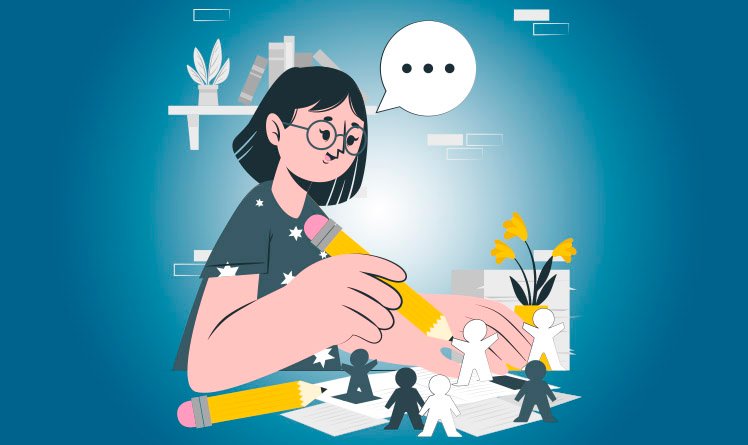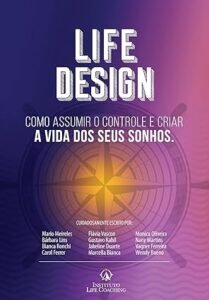Life Design: What it is and how to apply it for a fulfilling life

|
Getting your Trinity Audio player ready...
|
We live in a time where chasing meaningless goals has become almost the norm. But... what if the real revolution was to stop, breathe, and redesign your life with intention? Life Design proposes exactly that: stop just reacting and start creating.
In practice, it's about aligning your lifestyle with who you truly are—not with what others expect of you. This is especially true for people who feel they've tried everything but still harbor a nagging sense of stagnation. This approach can be the key to a profound and definitive turning point.
In this article, we’ll explore what Life Design is, why it’s important, and how you can apply it to create a meaningful and fulfilling life.
What is Life Design and why does it matter?
Imagine that you are building the house of your dreams. You have complete freedom to choose the location, style, materials, decoration… Everything will be done according to your tastes, needs and desires. Life Design is very similar to this, except that instead of building a house, you are building your life.
In this way, Life Design is a process of self-discovery and planning that aims to create a life aligned with your values, passions and goals. It is a proactive approach to life, where you are the architect of your destiny.
Life Design is an innovative approach to designing the life you want, using tools and methods from design thinking, positive psychology, the mindfulness, neuroscience, and Neuro-Linguistic Programming (NLP). It's a continuous process of self-discovery, experimentation, and adaptation that allows you to take control of your life and build a more authentic and meaningful future.
“Life Design is the art of living like a prototype — you test, learn, adapt, and evolve.”
The Origins: From Positive Psychology to Design Thinking
The concept of Life Design has its roots in positive psychology and the personal development movement. Thus, it arose from the need to go beyond the simple pursuit of happiness and the need for a meaningful and fulfilling life. Over the years, it has been refined by various experts and has become a widely recognized approach to personal development.
In short, two distinct areas contribute unique concepts and approaches. The first is Psychology, where Mark Savickas' pioneering research in the 1990s laid the foundations for the development of this field. You can learn more about the Life Design proposal focused on psychology in the article “Life Design Counseling: Theory, Methodology, Challenges and Future Trends.”
The second area is Design, exemplified by the groundbreaking work of Stanford University professors Bill Burnett and Dave Evans. In 2016, Burnett and Evans consolidated their ideas in a book titled “Designing your life: how to build a well-lived, joyful life”, which was later translated into Portuguese as “The design of your life” (Editora Rocco, 2017). This book has become a fundamental reference for those seeking to apply design principles to create a more meaningful and rewarding life.
The Four Stages of Life Design
Life Design is an approach that promotes the analysis of the stories we construct for our lives. After all, who are we really? What have we accomplished so far? Furthermore, why do we make these decisions? Finally, what do we want to achieve?
To embark on this process, there are four fundamental stages:
- Exploration: Engage in deep reflection and identify areas of dissatisfaction in our lives.
- Formulation: Generate new ideas and visualize different scenarios to resolve these dissatisfactions.
- Planning: Select one of the ideas and develop a detailed action plan to move forward.
- Experimentation: Put the ideas and strategies developed into practice, testing them in the real world to evaluate their effectiveness.
Life Design vs. traditional life planning
Life Design differs from traditional life planning in some important ways:
- Focus: Life Design focuses on the present and future, while traditional life planning often focuses on the past.
- Flexibility: Life Design is a flexible process that adapts to change. Traditional life planning, on the other hand, tends to be more rigid and static.
- Protagonism: Life puts you in control of your life, whereas traditional life planning can leave you passive and dependent on others.
Importance of Life Design
Life Design is important because it puts you in the driver’s seat of your own life. This way, instead of simply reacting to circumstances, you become proactive in creating your destiny. This leads to a sense of control and accomplishment, and increases the likelihood of achieving your goals and living a more fulfilling life.
The pillars of Life Design
To apply Life Design effectively, it is helpful to understand its core principles:
Self-knowledge: who are you and what do you want?
Self-knowledge is the basis of Life Design. Therefore, to build the life you want, you need to have a deep understanding of yourself, including your values, beliefs, dreams, goals, skills and talents.
Some tools for self-knowledge:
- Personality Tests: There are several online tests that can help you better understand your personality and your strengths and weaknesses.
- Self-knowledge exercises: There are several exercises you can do to get to know yourself better, such as writing a diary, doing meditation or talk to a psychologist.
- Feedback: Part feedback for people who know you well and are close enough to help with both the positive and negative aspects of your journey.
“Self-knowledge is not a luxury: it is a prerequisite for freedom.”
Purpose: What is its meaning in life?
Once you know yourself better, it is important to define your life purpose. In short, what motivates you to get out of bed in the morning? What impact do you have on the world? Finally, what do you want to leave behind?
Some questions to help you find your purpose:
- What makes me happy?
- What are my talents and skills?
- What makes me fulfilled?
- What are my values?
- What kind of world do I want to help create?
Experimentation: learning from practice
Life Design is an experimental process, so the best way to find out what works for you is to experiment with different things. So don’t be afraid to step out of your comfort zone and try new things.
Some tips to try:
- Take courses and workshops on different topics.
- Participate in interest groups and online communities.
- Talk to people who do what you would like to do.
- Volunteer for a cause you believe in.
- Travel to different places and experience new cultures.
Protagonism: taking control of your life
In this process, you are the protagonist of your story. Therefore, you are responsible for making decisions, taking action and building the life you want. So, don't wait for things to magically happen, make them happen!
Some tips for taking the lead:
- Set your own goals and objectives.
- Make an action plan to achieve your goals.
- Take initiative and don't wait for things to happen.
- Be persistent and don't give up easily.
- Learn from your mistakes and keep trying.
Flexibility: adapting to change
The world is constantly changing, and it's important to be flexible and adapt to new realities. In this sense, Life Design helps you develop this flexibility so you can deal with challenges and seize the opportunities that arise along the way.
Some tips to be more flexible:
- Be open to change.
- Learn new skills.
- Be resilient and overcome challenges.
- Have a plan B in case things don't go as planned.
- Adapt your goals and objectives to your reality.
Applying Life Design in practice
Defining your values and priorities
The first step to applying Life Design is to define your values and priorities. So, what is important to you in life? What are the things you value most?
Some questions to help you define your values and priorities:
- What makes me happy?
- What motivates me?
- What are my principles?
- What do I want to achieve in life?
- How do I want to live my life?
Creating an action plan
Once you’ve defined your values and priorities, it’s important to create an action plan to achieve your goals. So, what do you need to do to get where you want to be? What steps do you need to take?
Some tips for creating an action plan:
- Set goals SMART (specific, measurable, achievable, relevant and timely).
- Break your goals down into smaller, more manageable steps.
- Create a timeline to achieve your goals.
- Identify the resources you need to achieve your goals.
- Monitor your progress and make adjustments to your plan as needed.
Finding opportunities
Life Design helps you find opportunities to develop your talents, achieve your goals and build the life you want. So, be aware of the opportunities that come your way and make the most of them.
Some tips for finding opportunities:
- Participate in events and workshops.
- Connect with people in your area of interest.
- Follow companies and organizations you admire on social media.
- Read books and articles on topics that interest you.
- Be proactive and look for new opportunities.
Overcoming internal and external blocks
On the path to achieving your goals, you will encounter obstacles. Therefore, it is important to have resilience to overcome these challenges and move forward. Even more so in today's world, filled with constant transformations and challenges.
Some tips for overcoming obstacles:
- Don't give up easily.
- Learn from your mistakes.
- Ask for help when needed.
- Keep a positive attitude.
- Believe in yourself.
“Beliefs are not truths—they are filters. And filters can be changed.”
Celebrating achievements
It’s important to celebrate your achievements, big or small. This will help you stay motivated and keep moving forward.
Some tips for celebrating your achievements:
- Do something you enjoy.
- Share your achievement with friends and family.
- Reward yourself for your effort.
The connection with NLP, Mindfulness, Positive Psychology and Neuroscience
Life Design becomes much more powerful when integrated with four transformative approaches: NLP, Mindfulness, Positive Psychology and Neuroscience. Together, these tools expand awareness, strengthen action, and sustain real changes in the brain and behavior.
- NLP (Neuro-Linguistic Programming): Allows us to identify and restructure limiting beliefs. This helps us change thought and behavior patterns that are at odds with our values and goals, creating new, more productive mental pathways.
- Mindfulness: acts as a focusing lens. After all, by training your mind to be in the present, you reduce anxiety about the future and improve your decision-making. This is essential to applying Life Design in a conscious and balanced way.
- Positive Psychology: provides the emotional and motivational foundation for the process. Therefore, rather than focusing on "correcting flaws," it proposes cultivating personal strengths, optimism, gratitude, purpose, and positive relationships. This creates fertile ground for sustainable change and building a life of greater well-being.
- Neuroscience: is the scientific backing behind all of this. In short, it proves that the brain has plasticity—that is, we can literally redesign our mental circuits through practice, intention, and repetition. In other words, each conscious decision we make in this process strengthens neural networks associated with well-being and fulfillment.
“Life Design isn’t just an inspiring philosophy—it’s a science-based methodology that puts you in control of your transformation.”
Tips for a life with design
- Cultivate a growth mindset, where you see challenges as learning opportunities.
- Practice gratitude daily, focusing on what you have rather than what you lack.
- Seek balance in all areas of your life, prioritizing both work and leisure, physical and mental health, and personal relationships.
- Be open to trying new things and stepping out of your comfort zone.
- Don't be afraid to ask for help and support when you need it; you don't have to do it all alone.
Benefits of Life Design
Life Design offers several benefits to those who apply it in their lives. Among them, we can highlight:
- Greater life satisfaction: By building a life that is aligned with your values and goals, you will feel more fulfilled and satisfied.
- Most significant career: Life Design helps you find a career that is most meaningful to you, utilizes your talents and skills, and brings you the most joy.
- More authentic relationships: Life Design helps you build more authentic and healthy relationships with the people around you.
- More resilience and adaptability: Life Design helps you develop more resilience and adaptability to deal with life's challenges.
- A life with more purpose and meaning: Life Design helps you find your life purpose and build a more meaningful life.
In short…
Redesigning your life isn't a luxury. It's a necessity. Life Design offers the tools, but the first step is up to you. With each conscious choice, each small change, you build a lighter, more purposeful life—and one that's more like who you truly are.
“You don't need a perfect plan. You need courage to start and flexibility to keep going.”
FAQ – Frequently Asked Questions about Life Design
1. Does Life Design work for any age?
Yes! Whether you're in your 20s or 60s, Life Design is a tool that can be adapted to any stage of life.
2. What is the difference between Life Design and coaching?
Coaching guides specific goals; Life Design is a broader process of life restructuring based on values and experimentation.
3. Is it necessary to drop everything to apply Life Design?
Absolutely not. Life Design starts with small changes, without requiring radical ruptures.
4. What areas of life can I work on with Life Design?
Career, relationships, spirituality, health, leisure — everything that is part of your life.
5. How long does it take to see results?
It depends on your dedication, but with small weekly actions you can already notice changes in a few weeks.
Recommended reading:
LIFE DESIGN: How to take control and create the life of your dreams – Life Coaching Institute
Image: Freepik
Article originally published on 03/04/2024 and updated on that date.

Marcel Castilho is an expert in neuromarketing, neuroscience, mindfulness and positive psychology. In addition to being an advertiser, he also has a Master's degree in NLP – Neurolinguistic Programming. As the owner and founder of the communications agency VeroCom and also of the digital agency Vero Contents, he has been studying human behavior for over 30 years.



